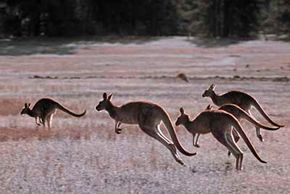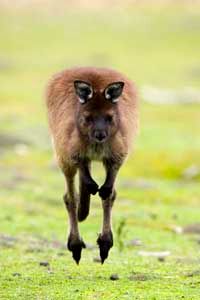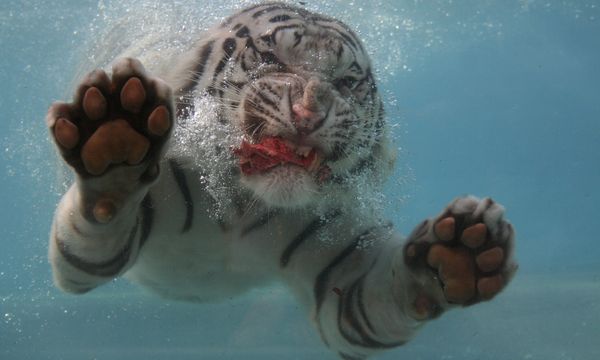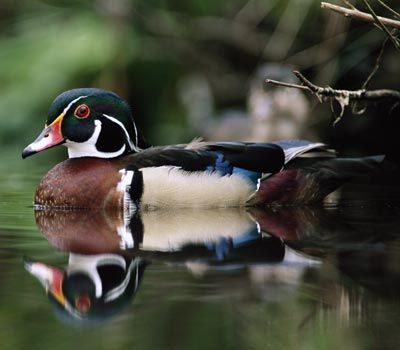Rabbits, grasshoppers and frogs share a special spring in their steps, hopping around like Mexican jumping beans. But Australia's native kangaroo out-hops them all. Race a cottontail rabbit against a red kangaroo, and the roo would leap ahead at a possible 35 mph (56 kph), more than twice the top speed of Peter Rabbit. In fact, these marsupials are the only large mammals to use this pogo stick-styled locomotion.
The first records of kangaroo sightings trace back to Dutch merchant Francisco Pelsaert, whose ship wrecked off the Australian coast in 1629 [source: Domico]. By 1770, the animal had become more well-known to Europeans. Legend has it that "kangaroo" came from the Aboriginal word for "I don't know," which natives used to describe the fascinating animal to Capt. James Cook [source: Domico]. People transported the first captive roos from their Australian homeland to London in 1791, thus cementing their global popularity.
Advertisement
The tall, furry, red and gray kangaroos we know the best are part of the family Macropodidae, or macropodids, so named for their large hind feet [source: Flannery]. These marsupials, along with possums and koalas carry their offspring in pouches. Today, more than 60 species of the macropodid family exist, including the large red and gray kangaroos down to the palm-sized musky rat-kangaroo.
Fossil evidence dating back 25 million years has revealed that kangaroo ancestors did not hop [source: The Daily Telegraph]. At that time, rainforests covered most of Australia, and the predecessors most likely fed from fruits and leaves and could climb trees [source: The Daily Telegraph]. One existing species, the tree kangaroo, still inhabits parts of the rainforests in Papua New Guinea. As the continent's climate heated up, the rainforests gave way to dry, grassy plains, guiding the roos to their current terrestrial existence.
And what better way to cruise the plains than by leaps and bounds? We'll get down to the whys and hows of kangaroo hopping next.
Advertisement



